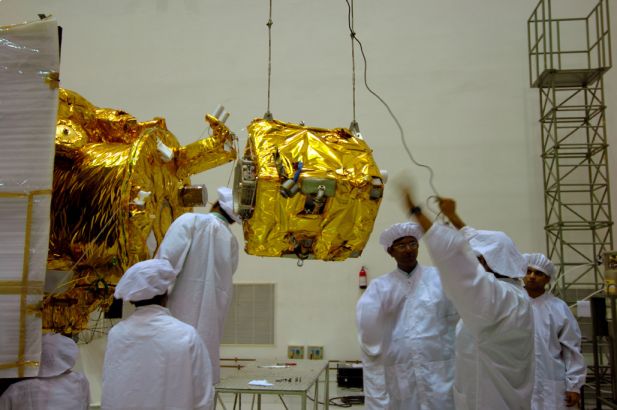The Indian spacecraft to the moon took off from eastern India, its fate is unclear * The spacecraft will attack the moon and map it in a variety of wavelengths using 11 instruments, three of which were donated by the European Space Agency * The spacecraft will also launch a projectile on the lunar surface in order to study the results of the collision

Tonight at 02:50 am, the Chandrayaan 1 spacecraft that will explore the moon is scheduled to take off from the east coast of India. The spacecraft joins the Japanese and Chinese spacecraft that have been circling the moon for several months.
The Chandrayaan-1 spacecraft, the first Indian mission to the moon supported by the European Space Agency, is scheduled to take off tonight at 1:02 Israel time from eastern India. The spacecraft is designed to map the moon in detail, using a wide variety of instruments at different wavelengths of the electromagnetic spectrum.
The spacecraft will analyze the surface structure as well as the lunar crust in high resolution, and will provide a better understanding of the origin, development and composition of the Earth's natural satellite. A smaller spacecraft will come out of the spacecraft and crash on the moon in order to examine the properties of the surface at the time of the collision.
Chandrayaan-1 is the first joint mission of the European Space Agency and the Indian Space Research Organization, and the first Indian scientific mission to take place outside Earth orbit.
Chandrayaan 1 will observe several wavelengths in the electromagnetic spectrum – visible, near-infrared, microwaves and X-rays to map the mineral composition of the Moon at an unprecedented high resolution to study the geology and geochemistry of the Moon.
The spacecraft will perform the following operation:
- The analysis of the geological, mineralogical and topographical aspects of the lunar surface at an unprecedented level.
- It will make it possible to study the distribution in the depth of the surface of the minerals that originate from the crust
- To investigate the processes that gave rise to the formation of craters, seas and basins on the moon
- To investigate the changing phenomena ("weather"), which originate from the interaction between the solar wind and the cosmic rays with the lunar soil.
- Analyze the magnetic anomalies on the surface of the moon
- to look for glaciers at the poles
- Produce a three-dimensional map of areas of special scientific interest, with a high spatial resolution (5-10 meters).
- Launch a small spacecraft that will crash on the surface of the moon to examine the properties of the subsoil near the ground as well as try technologies for causing the collision.
What is special about the mission?
Although spacecraft in the past have already collected soil samples from the Moon for later analysis on Earth, the role of remote sensing of the Moon's surface is gaining momentum. Penetrating local studies of the Moon, especially such as that carried out by the Apollo, Luna and Lunar Prospector missions, have provided a considerable amount of data about the surface of the Moon that have given us insight into the processes responsible for the formation and evolution of the Moon.
However, there are many other aspects, such as the global mineralogical composition, size and structure of the moon, which require extensive research from orbit using remote sensing techniques. Other aspects to be investigated are the existence of ice and water in shadowed areas in the polar regions of the Moon, and the asymmetry between the part facing the Earth and the far side of the Moon.
The spacecraft carries within it 11 instruments that will record in high quality the fields of visible light, near infrared, low and medium energy X-rays, and will try to answer these questions from orbit. Three of the instruments were donated by the European Space Agency. Israel was asked to make proposals for the experiments that would take place on the spacecraft, but in the end not a single signal from the Israeli proposals was received.
current update
02:57 - The spaceship was launched, its condition is unclear, according to the tone of the CNN reporter, apparently it's fine, the transmission was interrupted and they saw the control room instead of the missile taking off.
Previous articles on the subject

3 תגובות
How did they bypass Israel, after all, India is considered a third world country...
Well, it doesn't matter, good luck to them and a safe return.
It is interesting to know if all the data collected to date from lunar studies have been exhausted to the end and everything that can be extracted has been extracted from them. It seems to me that such a system can provide work for many scientists for many years.